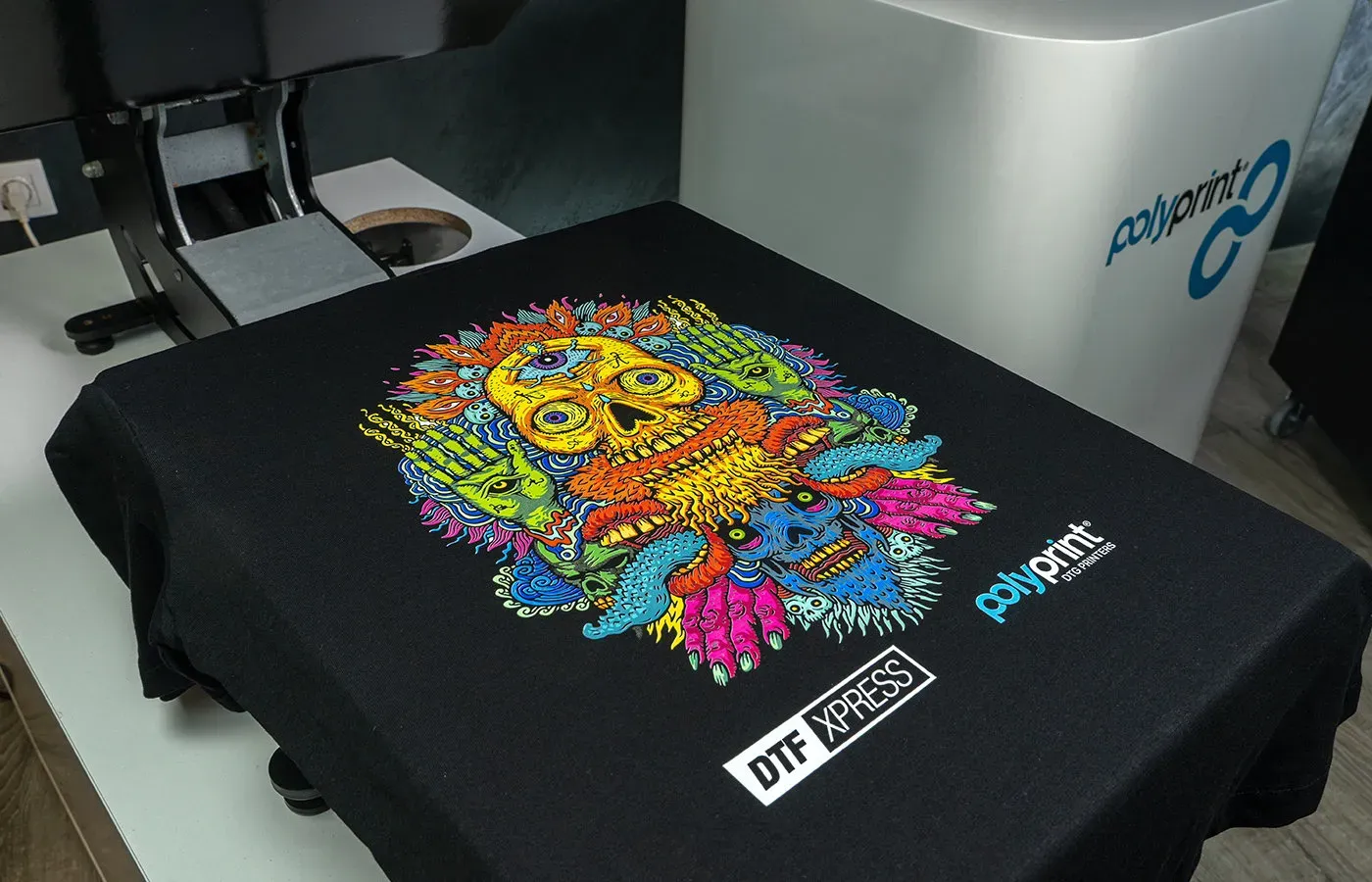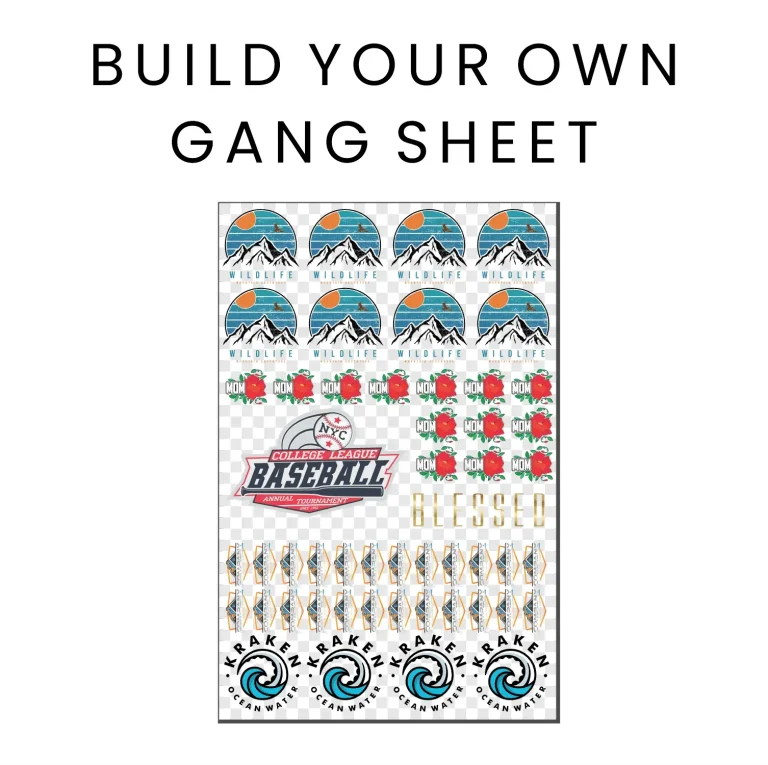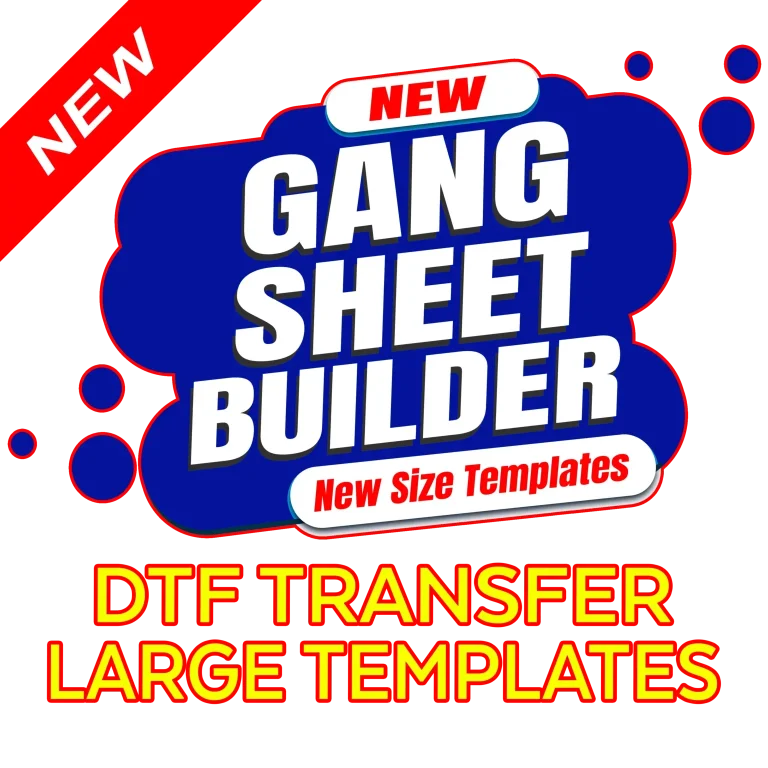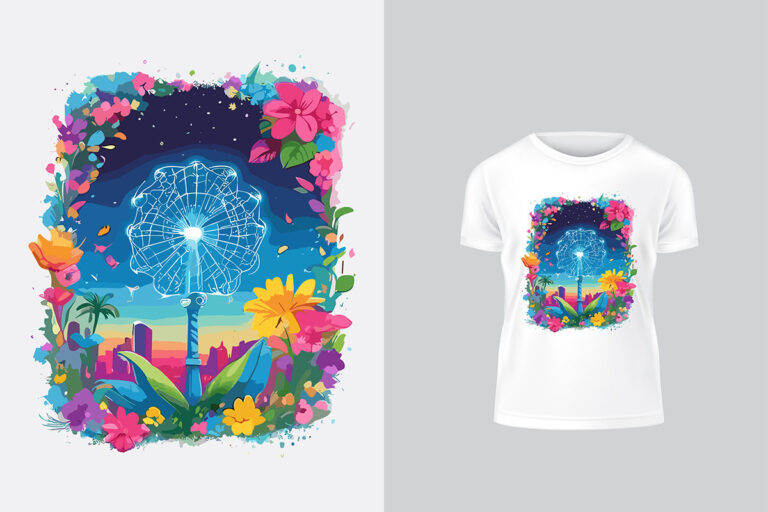DTF Printing: Trends and Innovations to Watch in 2025
DTF printing, or Direct-to-Film printing, is rapidly revolutionizing the textile printing landscape, becoming a go-to solution for custom apparel printing needs. This innovative technique allows businesses and creatives to produce vibrant, high-quality designs directly on various fabric types, making it a versatile choice for any project. With a unique ability to combine intricate detailing and efficiency, DTF printing caters perfectly to the growing demand for personalized garments, particularly among small business printing solutions. Additionally, this printing technology embodies eco-friendly printing practices, appealing to environmentally conscious consumers and companies alike. In this blog post, we’ll delve into the exciting trends and innovations in DTF printing that are shaping the industry today.
Direct-to-Film (DTF) technology, sometimes referred to as film printing, is emerging as a transformative force in custom fabric printing. As businesses increasingly embrace personalized apparel, this textile printing technology stands out due to its efficiency and superior color accuracy. By utilizing a unique printing method that transfers designs with precision, DTF enables even small businesses to create exceptional quality products without the complexities of traditional techniques. This approach not only supports creative expression but also aligns with eco-friendly printing practices, addressing the sustainability concerns of modern consumers. Join us as we explore the latest advancements and market trends within this dynamic field.
Understanding the Basics of DTF Printing
Direct-to-Film (DTF) printing represents a significant shift in textile printing technology, allowing for the creation of high-quality, vibrant prints on a variety of fabrics. This innovative method involves printing designs onto a special film, which are then transferred to fabrics using heat and pressure. Unlike traditional methods such as screen printing, DTF printing offers improved color accuracy and detail, making it ideal for producing custom apparel. Its ability to print on different materials like cotton and polyester broadens the scope for designers and garment decorators, enabling them to cater to diverse consumer preferences.
Furthermore, DTF printing has gained popularity due to its efficiency in production. As small businesses increasingly seek ways to compete with larger enterprises, the direct-to-film method provides an accessible solution. It allows for rapid turnaround times, which is particularly important in today’s fast-paced market. The technology minimizes the need for complex setups, making it user-friendly for entrepreneurs venturing into custom apparel printing for the first time.
Current Trends in Custom Apparel Printing
The realm of custom apparel printing is currently experiencing a transformative phase, with DTF printing leading the charge in innovation. A growing trend among fashion brands is the use of DTF technology to create personalized items that resonate with consumers on a deeper level. By leveraging DTF printing capabilities, brands can produce unique garments that reflect individual styles and preferences, catering to the demand for personalized fashion solutions.
Additionally, the competitive nature of the apparel market has made customization a key focus for many businesses. Brands are increasingly utilizing DTF printing to offer limited-edition runs and tailor-made designs that stand out in a saturated marketplace. This trend not only enhances customer satisfaction but also helps build brand loyalty, as consumers increasingly gravitate toward products that feel specifically designed for them.
Advancements in Textile Printing Technology
Technological innovations within DTF printing have been remarkable, paving the way for enhanced print quality and production efficiency. Today’s DTF printers come equipped with advanced features that improve the durability of prints, such as better ink adhesion and superior color vibrancy. These enhancements ensure that the final product is not only visually appealing but also capable of enduring the rigors of wear and tear, making them ideal for casual and sportswear alike.
Moreover, the integration of smart technologies into DTF printing processes has simplified operation for users of all skill levels. With improved user interfaces and automated functions, it’s easier than ever for small business owners to produce professional-grade prints. This evolution in textile printing technology is empowering a new generation of entrepreneurs, allowing them to harness the potential of DTF printing to scale their operations effectively.
The Importance of Eco-Friendly Printing Practices
As awareness of environmental issues grows, the call for eco-friendly printing practices has become a significant focus in the textile industry. DTF printing is increasingly aligning with sustainable practices, utilizing inks and materials that minimize environmental impact. Manufacturers are now exploring bio-based inks and other green alternatives that not only reduce waste but also appeal to environmentally conscious consumers.
Implementing eco-friendly practices within DTF printing operations can enhance a brand’s reputation and consumer trust. By promoting sustainable printing methods, small businesses can differentiate themselves in the marketplace, gaining favor among customers who prioritize corporate responsibility. This trend toward sustainability is reshaping not just consumer preferences but also industry standards, as businesses navigate the balance between profitability and ecological responsibility.
Target Markets for DTF Printing Solutions
The versatility of DTF printing positions it well for various market segments, particularly for small to medium-sized enterprises (SMEs). These businesses are often at the forefront of adopting DTF technology due to its low overhead costs and ability to produce custom designs without the need for large-scale manufacturing. DTF printing allows these businesses to efficiently meet consumer demands for personalization while minimizing inventory risk.
Additionally, the market for custom apparel is expanding rapidly, fueled by events and promotions that require unique and immediate solutions. Sports teams, community events, and local businesses all seek customizable options that can be fulfilled swiftly. DTF printing serves as a bridge for these markets, enabling real-time production of tailored apparel that meets the specific needs of consumers, thereby fostering a stronger connection between brands and their customers.
Exploring the Future of DTF Printing Technology
As we look ahead, the future of DTF printing seems bright, marked by continuous innovation and the adaptation of emerging technologies. With ongoing advancements, we can expect even greater efficiency and quality in print output, alongside the introduction of new materials and inks designed specifically for DTF processes. This evolution will likely open doors to new applications beyond traditional garment printing, perhaps extending into home textiles and accessories.
Furthermore, as businesses continue to embrace digital transformation, the integration of DTF printing with e-commerce platforms will enhance order fulfillment processes. This synergy can streamline operations, enabling businesses to offer customizable designs directly through their websites, catering to a growing consumer appetite for personalized shopping experiences. The ultimate trajectory for DTF printing will undoubtedly revolve around innovation, sustainability, and the capacity to adapt to the changing demands of the market.
Frequently Asked Questions
What is DTF printing and how does it work in custom apparel printing?
DTF printing, or Direct-to-Film printing, is a textile printing technology that involves printing designs onto a special film. This film is then transferred to fabric using heat and pressure, allowing for vibrant colors and intricate details. This method is revolutionizing custom apparel printing by offering quick production times and the ability to print on various fabric types, including cotton and polyester.
How does DTF printing compare to other textile printing technologies?
DTF printing stands out from other textile printing methods, such as screen printing and DTG (Direct-to-Garment) printing, by offering superior color vibrancy and detail. Unlike traditional screen printing, which requires setup for each color, DTF printing allows for multi-color designs to be printed in one go, making it more efficient for small business printing solutions and custom designs.
What are the benefits of using DTF printing for small businesses?
For small businesses, DTF printing provides several advantages: it offers quick turnaround times, reduces the need for large inventory, and allows for the production of custom apparel with unique designs. This flexibility helps businesses respond rapidly to consumer demands while minimizing waste, making it an attractive option in today’s competitive market.
Are there eco-friendly practices associated with DTF printing?
Yes, DTF printing is increasingly incorporating eco-friendly printing practices. Many manufacturers are developing sustainable inks and production processes that aim to reduce environmental impact. This shift towards sustainability not only meets consumer demand for green products but also helps businesses appeal to a more environmentally-conscious audience.
What innovations are currently shaping the future of DTF printing?
Recent innovations in DTF printing technology focus on enhancing print quality and efficiency. New printers, like the Epson SureColor G6070, feature improved ink adhesion and user-friendly interfaces, allowing even novice users to produce high-quality prints. These advancements make DTF printing more accessible and customizable for businesses of all sizes.
What types of fabrics can be used with DTF printing technology?
DTF printing can be used on a variety of fabrics, including cotton, polyester, and blends. This versatility makes DTF printing an ideal choice for different custom apparel printing applications, allowing businesses to create a wide range of products that cater to diverse customer preferences.
| Key Points | Details |
|---|---|
| What is DTF Printing? | A new technology that utilizes digitized designs printed on film and transferred to fabric using heat, allowing vibrant and detailed results across diverse materials. |
| Recent Trends and Innovations | Highlights include product launches like Epson G6070, market growth due to consumer demand, focus on technology enhancements, eco-friendly practices, and target markets being SMEs and custom jobs. |
| New Product Launches | The Epson SureColor G6070 printer launched in 2025, designed for garment decorators with high reliability and quality production. |
| Market Growth and Increased Interest | Surge in consumer demand for customization, helping small businesses create unique products, appealing to today’s market trend. |
| Technological Innovations | Integration of features for enhanced print quality, ink adhesion improvements, and user-friendly interfaces for all skill levels. |
| Eco-Friendly Practices | Shift towards sustainable inks and processes, catering to environmentally-conscious consumers and reducing waste. |
| Target Markets | Popular among SMEs and small batch producers, allowing quick response to market needs without extensive inventory. |
Summary
DTF printing has become a significant technology in the world of textile printing, revolutionizing how custom apparel is produced. As we observed various trends such as the introduction of innovative products like the Epson SureColor G6070, increasing market demand for personalized apparel, advancements in printing technology, and a transition towards eco-friendly practices, it’s clear that DTF printing is set to dominate the garment decoration landscape. Businesses embracing DTF printing can cater efficiently to the unique preferences of today’s consumers, ensuring they stay competitive and relevant in this fast-evolving industry.







